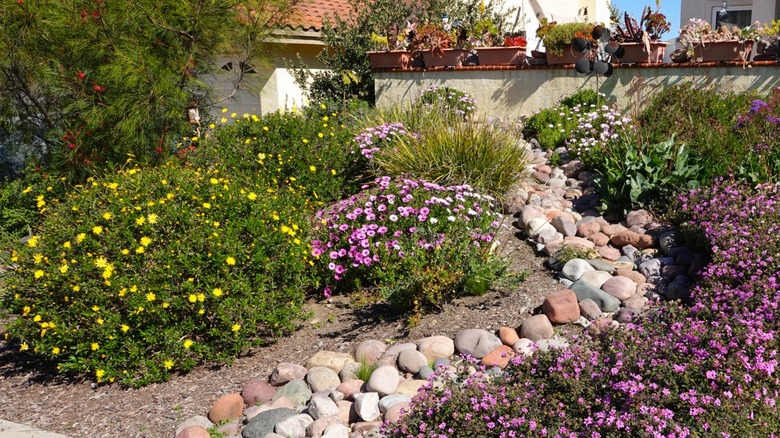More and more people today are learning about eco-friendly ways to landscape their yards, and one way to do this is by creating a tapestry lawn. These are yards that are filled with many different types of plants instead of just grass, which welcome in pollinators. If you’re curious about this landscaping technique, you might be wondering what sort of things are planted in one. The short answer is native perennials, which means any species that grows naturally in your area and that comes back for multiple years.
Further, while there certainly can be an element of planning when creating these lawns, there’s also a lot left up to Mother Nature. These yards have a large number of benefits, including that they’re more interesting to look at than just green grass, are good for the ecosystem, and don’t require much maintenance to thrive. Typically, they consist of low-lying plants and flowers that end up looking like a tapestry of colors when you put them all together, hence the name. But the real beauty lies in the fact that you shouldn’t have to water or worry much about your yard once the plants are established.
Choosing the right plants for a tapestry lawn

Usually, homeowners choose a height of about 6 to 10 inches for their plants, but if you have an extra-large area or different goals, it can be scaled up quite a bit. The main thing is, you’re looking for perennials that are native to your growing zone and don’t require a lot of water. Additionally, try to find plants and flowers with similar maintenance needs, such as the same light and humidity requirements. This will make things much easier for the minor care and maintenance you will need to perform. And, always avoid invasive species, as these can overtake your property and are hard to corral. You may also want to choose certain varieties that can stay alive even when walked over.
You’ll need to prepare your lawn by removing the grass and digging it out, and for best results, add about 8 inches of good-quality soil that drains well. You’ll want to give the plants a good foundation for growing in. Other than that, you can choose ground cover plants and flowers for their color and beauty, to create a patchwork quilt effect that’s all your own. You won’t need to mow very often, just an occasional trim to keep it from getting too wild. Your lawn will essentially become a natural tapestry that will change with the seasons and evolve over time.
Types of plants you could choose
Some ideas for what to plant include colorful wildflowers, clovers, thyme, chamomile, and stonecrop. Creeping thyme is good in USDA hardiness zones 4 through 9 and offers a ground cover with purple flowers for the majority of the year. This choice will also tolerate moderate foot traffic. Another top choice is white Dutch clover, a ground cover that blooms white flowers and also grows well in zones 4 through 9. This plant improves soil and reduces erosion, too.
If you’re looking for some wildflower ideas, the butterfly weed is a perennial that grows almost anywhere in the United States, sporting orange flowers that attract butterflies and other pollinators. Just remember it prefers full summer sunshine. You can also try a native coreopsis, which has beautiful blooms and is easy to grow. No matter where you live, you should be able to find one native to the area.
Of course, this is a landscaping trend that’s different for everyone, depending entirely upon where you live and what your personal preferences are. It represents a chance to create a landscape in harmony with nature, while at the same time offering a palette to express your artistic flair. And, your yard will require less maintenance, meaning that you’ll spend less time weeding and mowing.